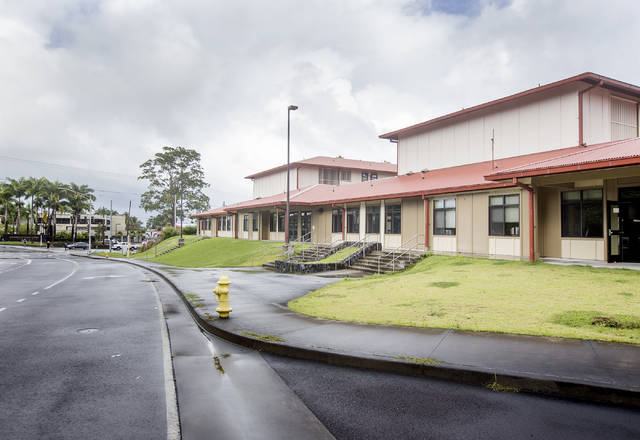UH-Hilo considers slashing cost to live in dormitory
The University of Hawaii at Hilo wants to lower the price of its most underused residence hall by about 18 percent next fall, part of a proposal to boost the dorm’s occupancy and generate more funding to pay back bond debt.
ADVERTISING
Hale ‘Alahonua, a 300-bed, suite-style dormitory, has remained less than 60 percent full since opening in 2013. Currently it’s about 50 percent occupied. Many students have complained the dorm is too expensive — at $3,859 per semester, it’s the priciest housing option on campus.
As a result of low occupancy, UH-Hilo has dipped into reserve funds to pay off a 30-year, $17 million revenue bond used to help finance the $28 million dorm when it was built. Those reserve funding payments have amounted to a little more than $400,000 annually since 2015.
This week, administrators presented a three-year rate restructuring proposal that would slash the yearly cost to live in Hale ‘Alahonua by more than $1,400 — putting it about $300 cheaper per year than one-bedroom double rooms in Hale Ikena, a popular apartment-style dorm and the next priciest on-campus housing option.
The plan will go up for vote by the Board of Regents on June 1. If approved, it would take effect in the fall. The board also could approve an alternative price restructure.
If approved as is, the proposal also would raise Hale Ikena’s prices by 5 percent in the fall. Remaining dorms would stay the same price next year, but all would increase by 5 percent each year for two years starting in the 2018-19 school year.
Meal plan prices also would increase slightly in order to match rising food prices and shipping costs, said Farrah-Marie Gomes, UH-Hilo’s vice chancellor for student affairs.
“Why are we confident about this? Well, for the past four years, as enrollment (campuswide) has continued to decrease, housing has consistently had 18 percent of the total student population,” Gomes said Thursday at one of six town hall meetings aimed at collecting input on the plan from students. “So while enrollment may have decreased, the percentage of students living in housing has remained (constant).
“With the (price) reduction of Hale ‘Alahonua, the expectation is we will be able to bring up total occupancy and that’s how we make those payments to debt service.”
Gomes said it’s difficult to gauge how many more students would choose Hale ‘Alahonua next year if price cuts took effect, but it would need about 30 more occupants to equalize current revenues.
The campus would increase marketing efforts to attract more students to the dorm, she said.
“The goal is, out of the gate, No. 1, get the plan approved, and No. 2, increase occupancy by that minimum of 30 students,” Gomes said. “… Once we’re able to hit that point, we’ll begin to see the effects on occupancy.”
The plan calls for other dorm improvements such as upgrading spotty Wi-Fi in Hale Ikena, adding more activities for dorm residents and looking at ways to add air conditioning at Hale ‘Alahonua in the future.
No students attended Thursday’s town hall meeting, but Gomes said student feedback has been positive so far. The campus also plans to survey students in the coming weeks.
The full housing rate proposal can be found at tinyurl.com/HousingRateProposal.
Email Kirsten Johnson at kjohnson@hawaiitribune-herald.com.


